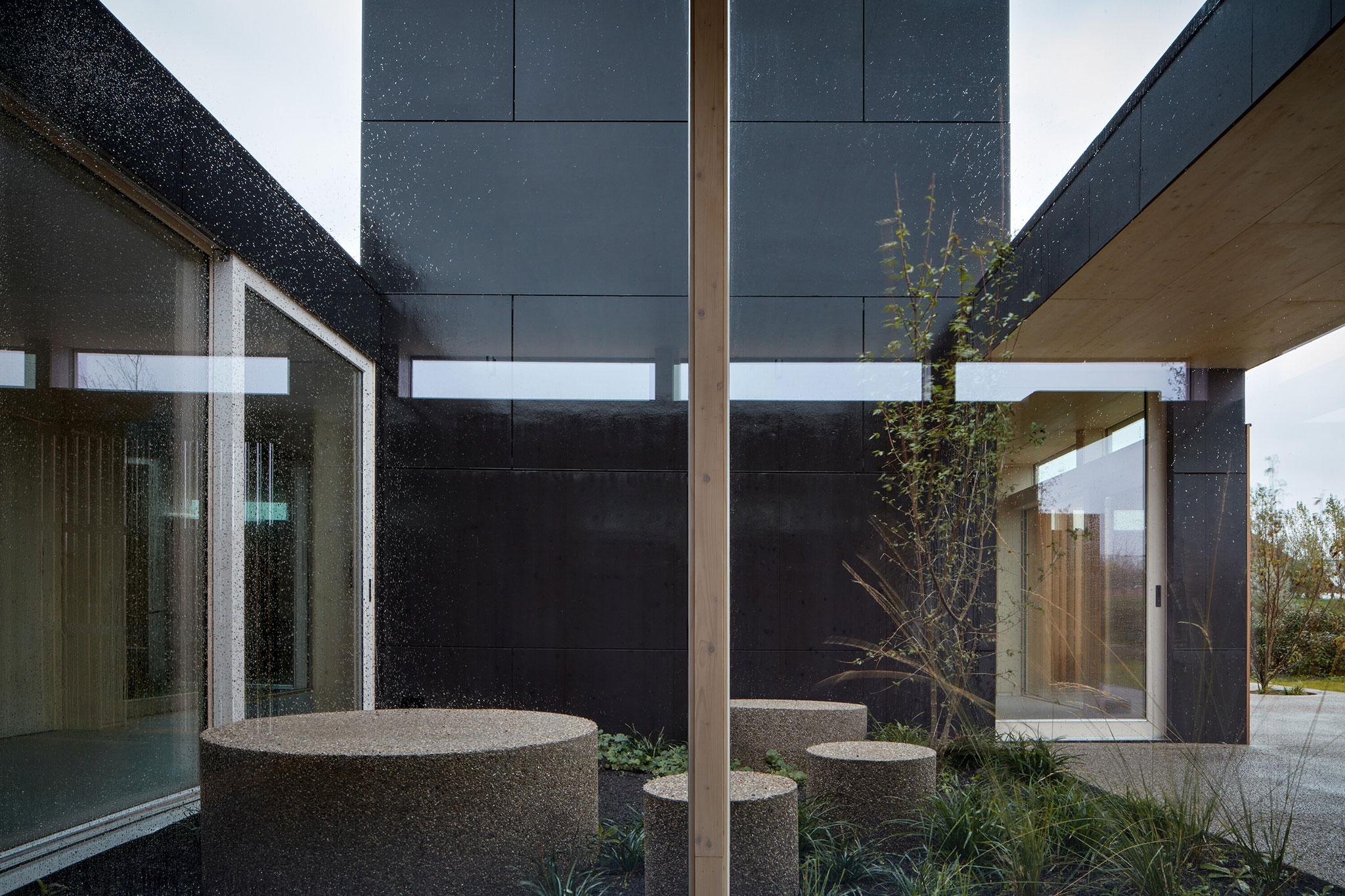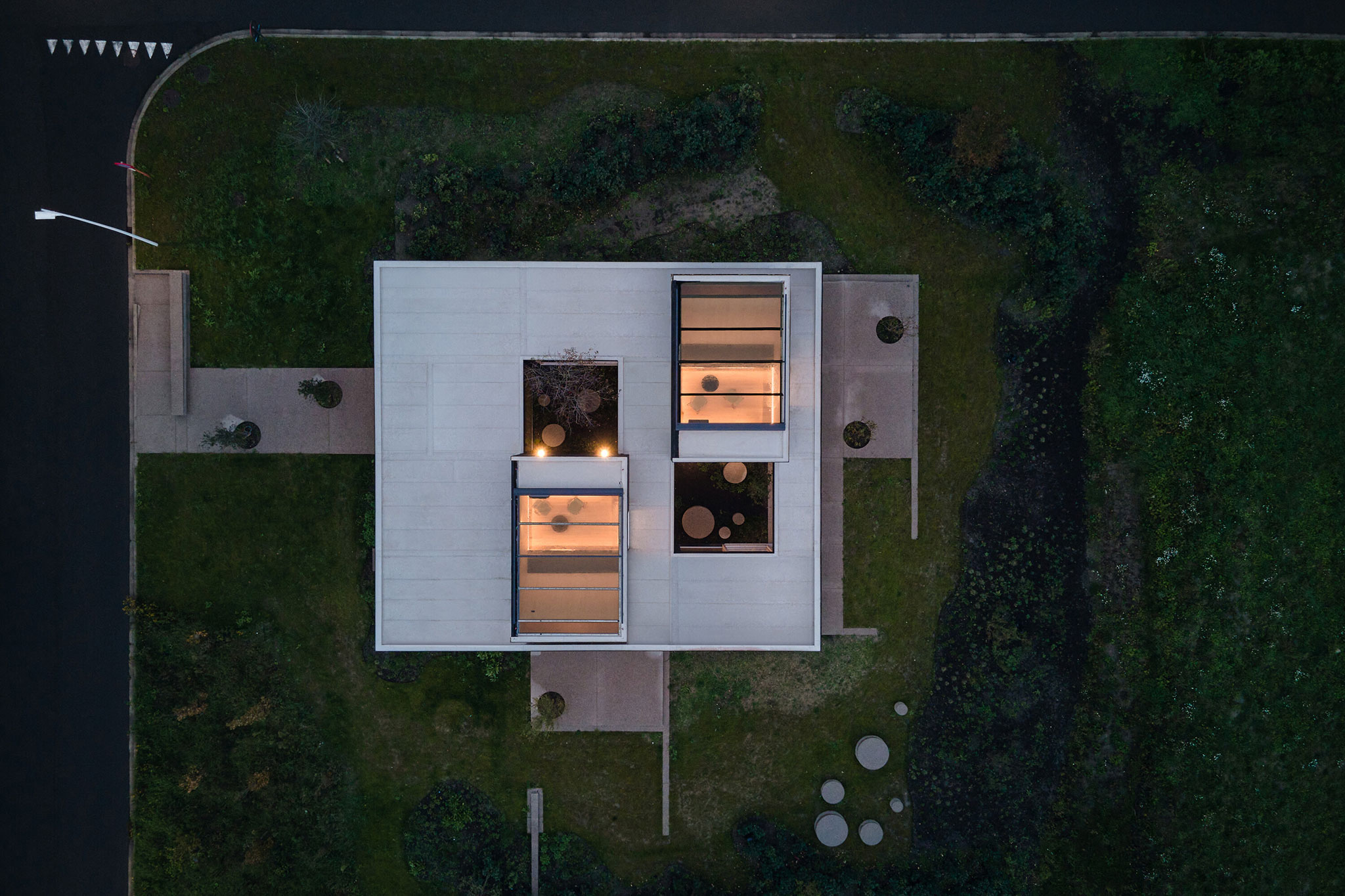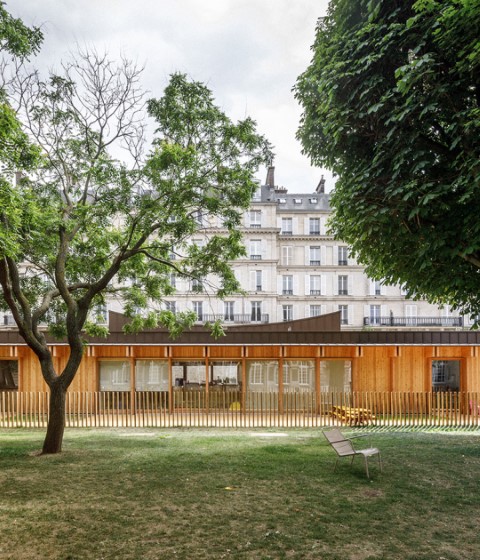Among the spaces that make up the Maggie center, an open and adjustable group therapy room stands out, the central patio overflowing with vegetation that transmits great tranquility to the patients and even has an office area where they can do administrative tasks.
Sustainability places the accent not only on obvious issues such as the use of wood and other construction materials or the fact that many were prefabricated and increasing operational efficiency in construction, but also on conscious decisions that do not have a negative impact on people, such as the control of the reverberation of the sound, or the control through the materials of the heart rate.


Warm Nest by Ark-shelter and ARCHEKTA. Photography by BoysPlayNice.
Description of project by Ark-shelter and ARCHEKTA
Designing a healing and restorative facility like a Maggie centre is an honour for any architect. Many architects have designed Maggie centres before such as Gehry, Zaha Hadid, Rem Koolhaas and many more, it was inevitable to do research on what was designed before. Seeing this project as a snapshot in the long list of initiatives to support truly restorative design, one piece to contribute to the honourable path of creating healthy and healing environments.
The AZ-Zeno hospital is the client and was in touch with the Maggie care organisation. They were inspired by the Maggie care philosophy and make this the first Maggie care-inspired facility in Belgium.
"In 1995, the founder Maggie Keswick Jencks, wrote this about her experience of cancer:
“A diagnosis of cancer hits you like a punch in the stomach…No road. No compass. No map. No training…At one time, I could not sit, or lie, or stand, listen or speak coherently because my shattered mind vibrated so violently through my body I felt I might disintegrate.”
Over the course of seven years, Maggie experienced cancer diagnosis, treatment, remission and recurrence. During that time, she took the insight and experience she had gained and transformed it into a pioneering approach to cancer care.”
Maggie’s Architecture and Landscape brief.

Warm Nest by Ark-shelter and ARCHEKTA. Photography by BoysPlayNice.
When Martin, Michiel and Viktor from Ark-shelter started to work together with me, Menno, it was to focus on the users. Applying UX Principles to the design process and understanding the human from a biological and neuroscience perspective. Finding a way to design a kind of “brain healthy spaces”. Taking into account academic research from John Paul Eberhard, Juhanni Pallasmaa, Eve Edelstein, Ulrich, Kaplan & Kaplan and many more. Who am I as a user of this space, what are my physical, physiological, psychological and social needs peel down the structure to moments. Moments of delight, comfort, support or sadness. Through an understanding of what the (medical) journey could be, whatever the outcome would be. The challenge was to make a space that allows for all these different emotional touchpoints in this journey for the patients as well as their loved ones.
The concept was around the idea of “a warm nest”, a space to come together, a welcoming space, not intrusive nor invasive. Focusing on calm gatherings, time to reflect, relax, regain strength, get together with loved ones, and embark on the journey to recovery in peace.
A soft ramp will guide you into the Centre, and a front door is set back from the facade to protect from wind, provide a safe entrance and remove the hospital look and feel. The building throughout can breathe and is penetrated by nature and views. Almost every seat has direct visual access to the outside. The windows on the top will ensure there is always gradual light throughout the building while providing privacy.

Warm Nest by Ark-shelter and ARCHEKTA. Photography by BoysPlayNice.
A mixture of direct and indirect views will allow different individuals to find different comfortable nooks where they can be themselves. Different spaces will allow for different individuals, different stages, and different group configurations to all be comfortable.
There is a warm fireplace to bring people together, to bring warmth and comfort. Flexible seating arrangements for comfortable gatherings from single to groups of 8 can easily fit in this space. The dining room is the heart of the house. The place with the most light, allowing for a space to gather for introverts as well as extroverts, sun and shade, the view outside, or into the comfortable courtyard. Protected yet not enclosed.
Directly accessible from the entrance there is an office space, for administrative tasks as well as formal matters that need to be taken care of by the volunteers. Therapy room I is wheelchair accessible, all therapy rooms are welcoming, and the same light wood is used in the rest of the building to give it a warm and homely feel. Non-traditional therapy rooms are set up following the same design language as the library, living room and office. Making it less clinical and more approachable. The therapy rooms upstairs are a bit further away from the core of the house. No hallways, no names on the doors. Comfortable spaces to get the right information, treatment or consultation you need.
The group therapy room is open and adjustable, from group sessions on the floor to more formal settings, this room can be used entirely based on the required setting. In all terms, showered with light, this room has a sunroof to make the space feel open and make it easier for people to connect. The terrace is sheltered with a wall of wood in the language of the building's protection from the wind or views. Providing safety and privacy or enjoying a moment of air, a breath or peace. Direct access to the courtyard will make this a comfortable space to retire for a moment alone or gather in the open air.

Warm Nest by Ark-shelter and ARCHEKTA. Photography by BoysPlayNice.
The courtyard, a serene and calm slice of nature, with lavish green, and protection from wind. The play of light that this skylight will provide will transform the space throughout the day and throughout the seasons, from warming colours to bright patches the wood will reflect the light and warm up the space. Therapy under the sky all on a journey under the same sun, to be comforted and hugged by a ray of light. After all, a place to come, to relax, to be safe, a warm nest.
Lastly, on a more personal review, the topic of sustainability is important to highlight. I want to address a different angle on sustainability in this concept. I am not going to point out the obvious emphasis on wood and other construction materials or the fact that a lot can be prefabricated and increase the onsite operational efficiency. What I want to focus on is real sustainability. Sustainability is about conscious decisions that don't impact future generations negatively. We all know that buildings impact us, for better and for worse. In certain spaces, we will have a slightly higher heart rate and an elevated level of cortisol or dopamine. The reverberation time of the sound can make me feel comfortable sharing in a social setting, and feel comforted, like a warm blanket around my shoulders. The key to this building is the understanding of true sustainability. Building a building that doesn't have a negative impact, and even can be restorative, to give better health to future users and generations. That is a truly sustainable building for life.



























































